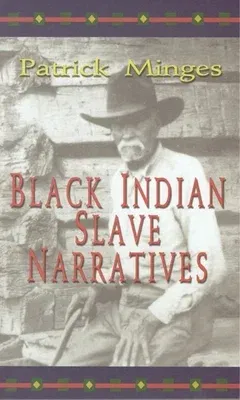Few people realize that Native Americans were enslaved right alongside
the African Americans in this country. Fewer still realize that many
Native Americans owned African Americans and Native Americans from other
tribes. Recently, historians have determined that of the 2,193
interviews with former slaves that were collected by the Federal
Writers' Project, 12 percent contain some reference to the interviewees'
being related to or descended from Native Americans. In addition, many
of the interviewees make references to their Native American owners. In
Black Indian Slave Narratives, Patrick Minges offers the most absorbing
of these firsthand testimonies about African American and Native
American relationships in the 19th century. The selections include an
interview with Felix Lindsey, who was born in Kentucky of
Mvskoke/African heritage and who served as one of the buffalo soldiers
who rounded up Geronimo. Chaney Mack, whose father was a "full-blood
African" from Liberia and whose mother was a "pure-blood Indian," gives
an in-depth look at both sides of her cultural heritage, including her
mother's visions based on the "night the stars fell" over Alabama. There
are stories of Native Americans taken by "nigger stealers," who found
themselves placed on slave-auction blocks alongside their African
counterparts. The narratives in this collection provide insight into the
lives of people who lived in complex and dynamically interconnected
cultures. The interviews also offer historical details of capture and
enslavement, life in the Old South and the Old West, Indian removal, and
slavery in the Indian territory.
Patrick Minges worked for 17 years for Amnesty International and Human
Rights Watch. He teaches in Stokes County Schools and at Forsyth
Technical Community College in Winston-Salem. He is also the author of
Slavery in the Cherokee Nation: The Keetowah Society and the Defining
of a People, 1855-1867 and
Far More Terrible for Women: Personal Accounts of Women in Slavery
.
"This book is an important contribution to the dialogue about
relationships between African-Americans and Native-Americans, and the
complex political context in which these narratives were recorded.
Patrick does not over-analyze this often emotional subject. He simply
allows the people to tell their stories." -Wilma Mankiller

